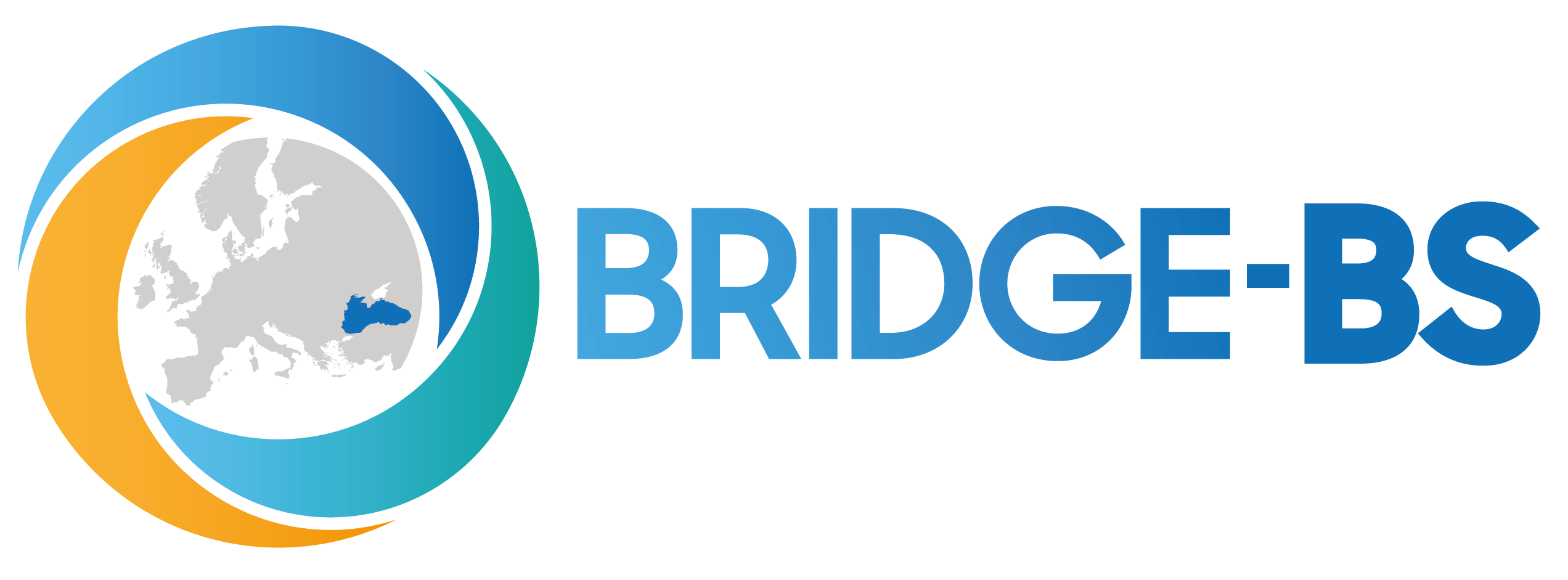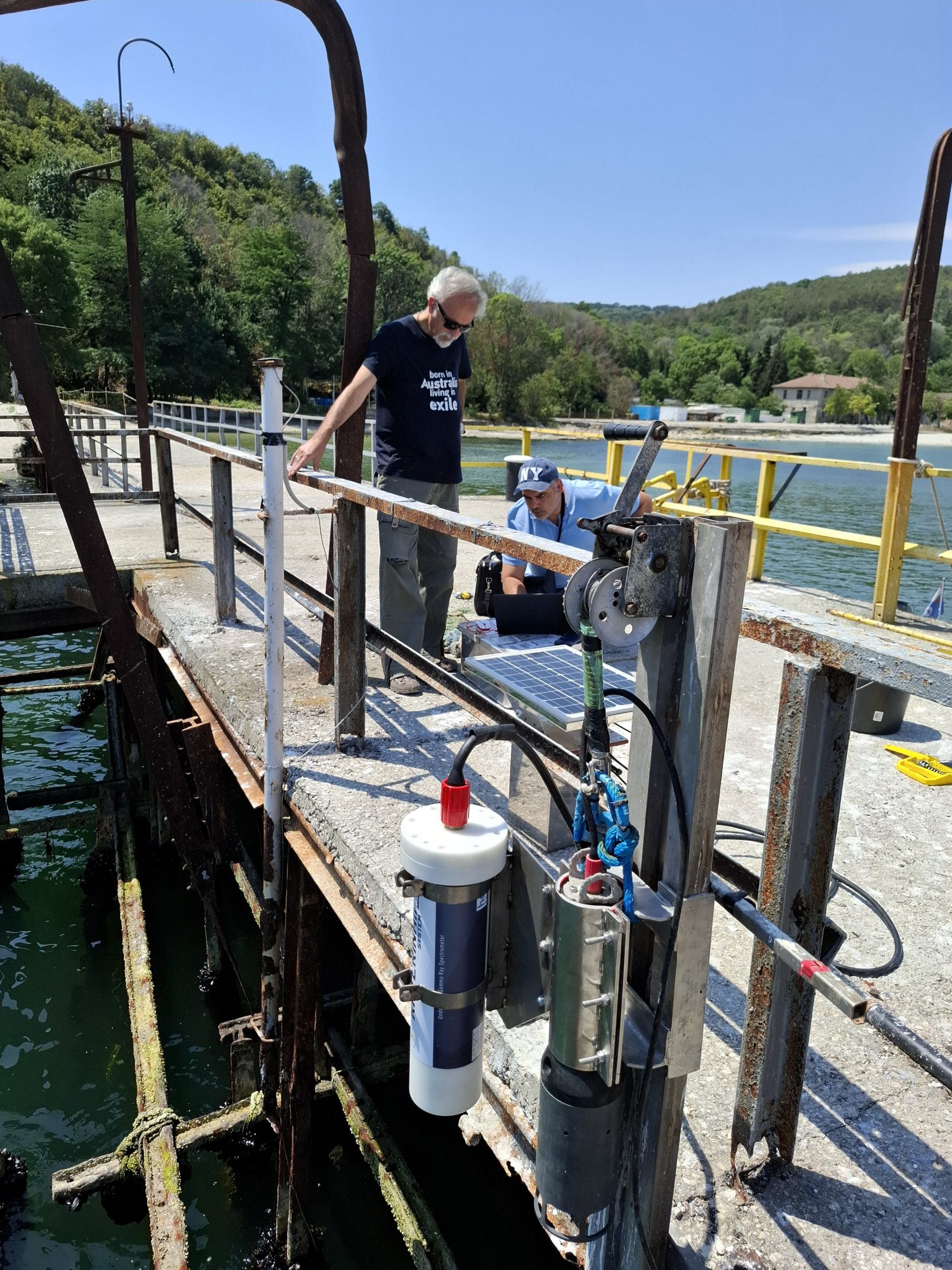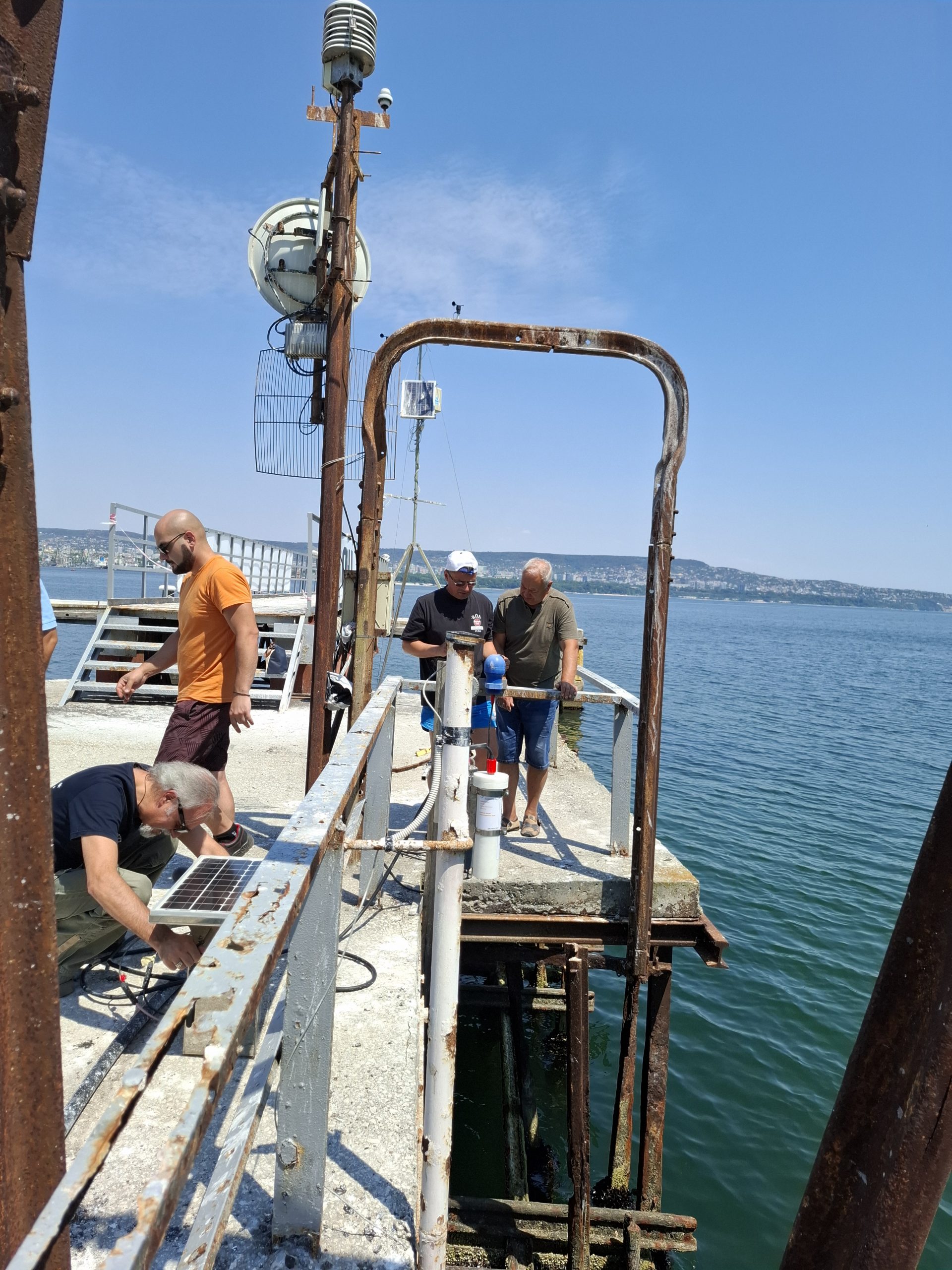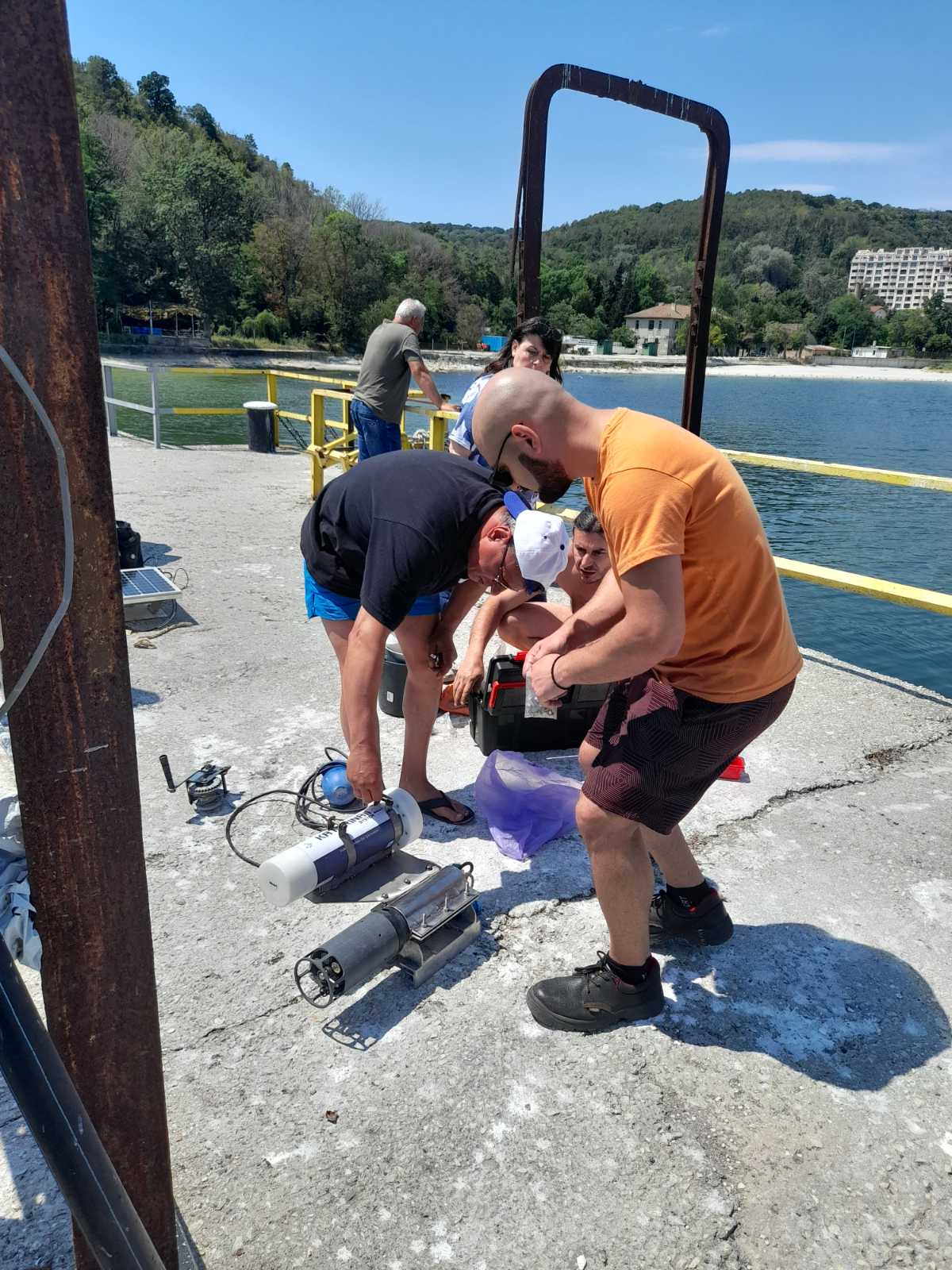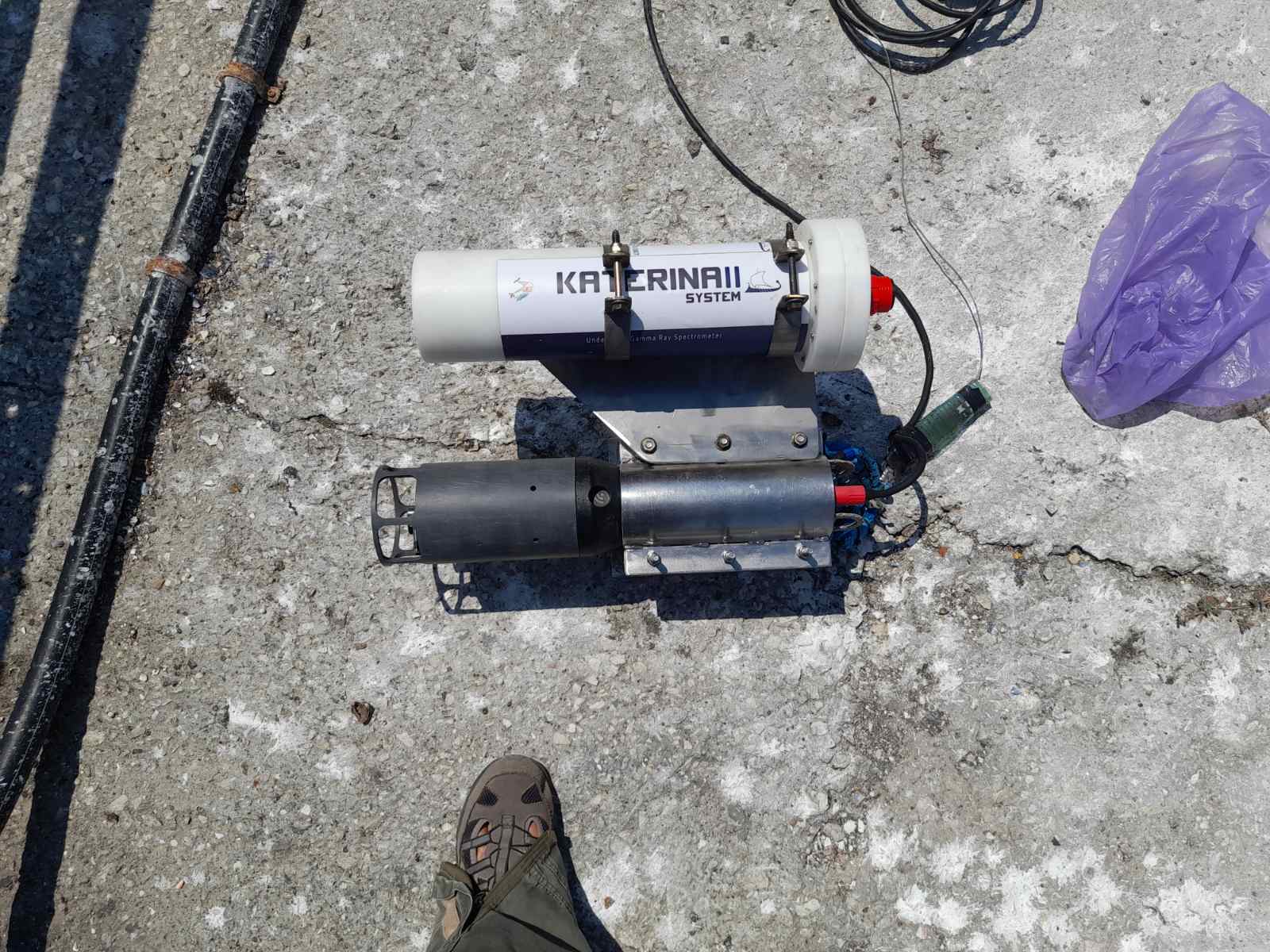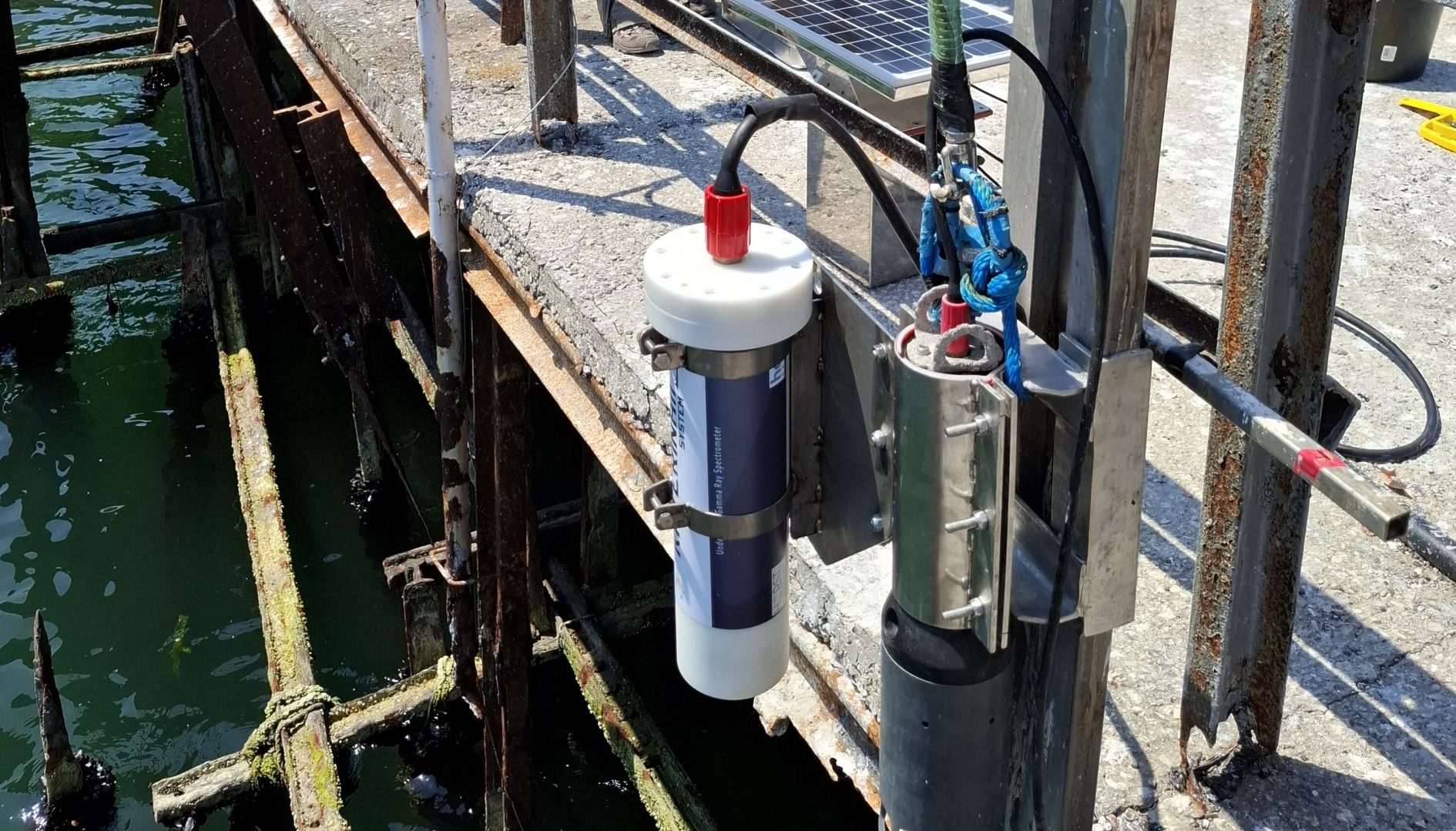Underwater Radionuclide Sensor was deployed in the Black Sea by BRIDGE-BS partners HCMR and IO-BAS in Varna!
As part of the BRIDGE-BS project, an underwater radionuclide sensor was successfully tested and calibrated in the lab and in a water tank. Unlike older systems, this sensor can provide precise measurements of radioactivity in still water, shown in units of Bq/m³.
After completing all the necessary preparations, BRIDGE-BS partners HCMR and IO-BAS deployed the system in the Black Sea to monitor radioactivity in a specific marine area in Varna. The setup, which includes both the sensor and a communication box, was installed on a fixed platform in the sea. It was also combined with other instruments, such as a CTD sensor, a DO sensor, and a chlorophyll-a sensor.
The goal is to develop a smart detection system with energy and communication autonomy, and integrated automated analysis to rapidly inform policymakers of potential or suspicious threats.
The system has now been running for a week, sending real-time data to the lab’s monitoring center. Early results are already being reviewed. This is an important first step toward setting up a permanent station that could provide continuous data in coastal areas where mobile networks are available.
